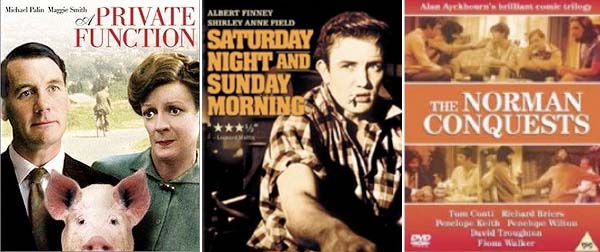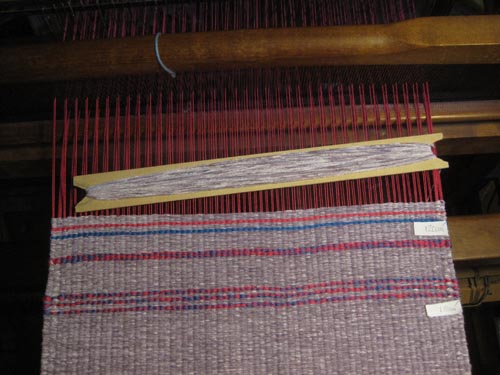
As well as being a lapsed reader, I’ve become a lapsed blogger and a very lapsed weaver. Not that I ever have been a weaver, just the very lucky owner of a sturdy Harris floor loom. I decided that my neglect of this wonderful piece of apparatus was shameful and set to dressing the loom with a very inexpert warp that was gathering dust in the same room as the loom. Warping / dressing a loom is a time-consuming activity so I gathered up the laptop and some DVDs for company and clocked-on for my two day warping shift.
It was quite by accident, and not by well-planned programme, that I selected DVDS that started me off in the late 1940s, led me through the 1960s and propelled me forward only as far as the 197os the decade in which I spent the majority of my secondary school education.
I’m sure that I’m not alone in imagining that once the Second World War was over in 1945 that everything hurried back “to normal”. Yes, I knew that rationing continued after the war, but being born in 1957, ten years after the setting of the film “A Private Function” and the wedding of Princess Elizabeth, I grew up in comparative luxury. The film is written by Alan Bennet and has Maggie Smith and Michael Palin as the two main protagonists. That alone should be enough to guarantee a delightful yet sometimes painful mix of comedy and social commentary but the film is also blessed with the appearance of Denholm Elliott, Liz Smith, Richard Griffiths, Bill Paterson and Alison Steadman. The forthcoming royal nuptials are to be celebrated with a “private function” arranged by the top people in the town. Post-war meat rationing means that provisioning such an event has to be done by circumventing annoying regulations which in this town are upheld by Bill Paterson in the role of Mr Wormold, the meat inspector. The lowly chiropodist, played by Michael Palin is forced by his overpowering and snobby wife (Maggie Smith) to enter into some uncharacteristic activity that pits him against the class-conscious “elite” of the town.
Although set in 1947, A Private Function was filmed in colour in 1984. By stark contrast, Saturday Night Sunday Morning was made in contrasty, moody, black and white in 1960. There are no attempts at social climbing here. Arthur, played by Albert Finney is only concerned with having a good time and not ending up like his parents. He works hard and plays hard including “carrying on” with a married woman whilst at the same time chatting up and “seeing” a girl of his own age. Rationing may be over but life in an industrial town is tough and basic with overcrowded housing and little let-up from a nose to grindstone existence apart from an occasional drink at the pub. In “A Private Function”, the doctor bemoans the imminent National Health Service when he will be forced to treat any ill person who turns up on his doorstep. In “Saturday Night, Sunday Morning” medical concerns are more about unwanted pregnancy with no legal solution. Moral transgressions in this monochrome world are dealt with in a literally “hands-on” way.
Fast forward thirteen years to 1973 and, in the three plays that together are “The Norman Conquests”, the stage is narrowed to two rooms and the garden of a middle class home within a short driving distance of London, somewhere on the south coast of England. There has been some progress in women’s rights. Ruth has a high-powered career while more or less supporting her liberal lascivious librarian husband, Norman. However, Annie, the daughter of the house is left single-handed to care for “mother” who has permanently taken to her bed. With the day to day problems of earning a living and eating of little concern we are treated to three plays in which Norman makes his conquests.




